ACTIVA™ PRESTO™
Für perfekte Ergebnisse dank der neuenCRYSTA Technologie
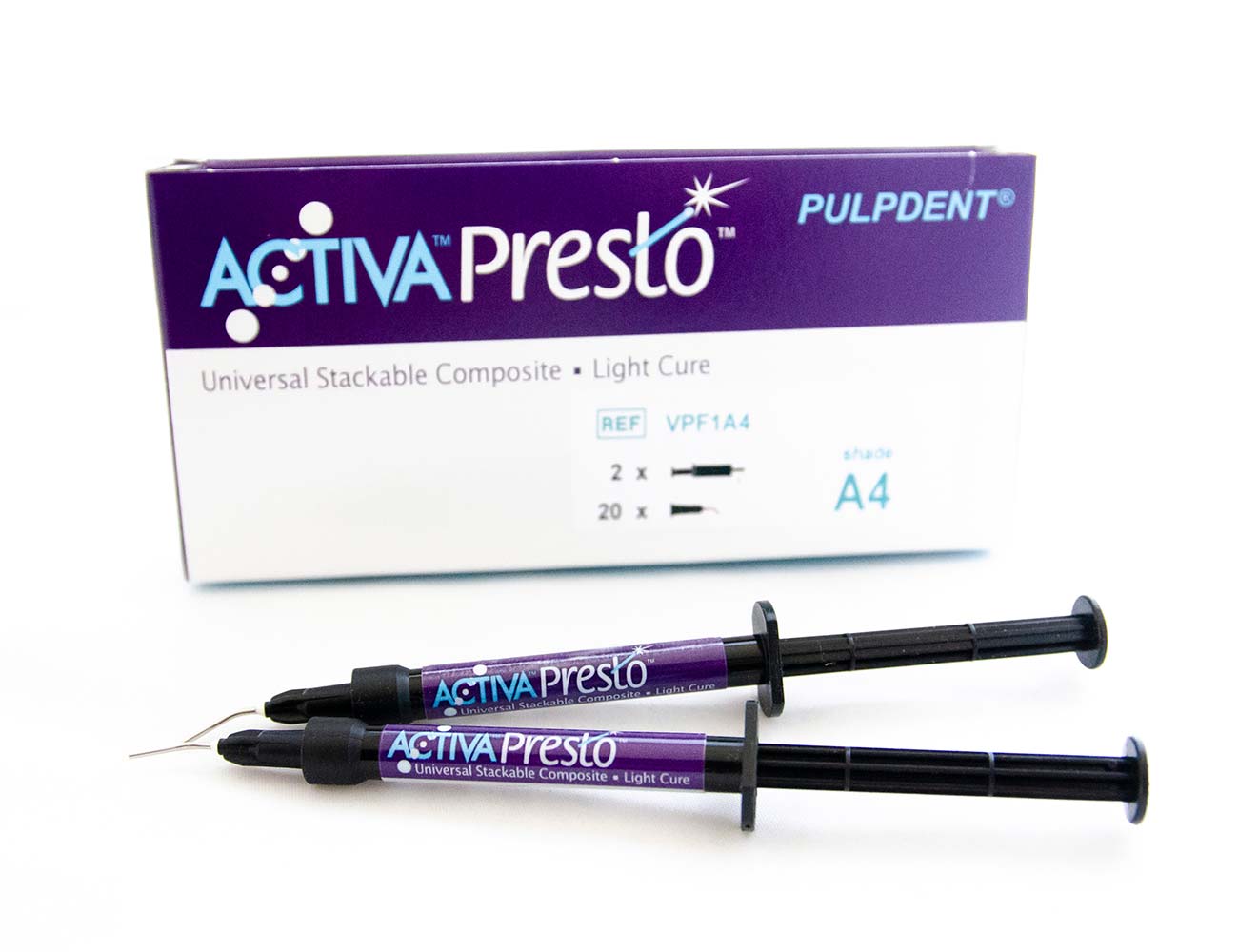
Die Entwicklungs-Aufgabe für ACTIVA™ PRESTO™ wurde ursprünglich durch den Wunsch von Zahnärzten nach einem mineralangereicherten Komposit mit einem einfachen Spritzenapplikationssystem inspiriert, welches dabei besonders gute Verarbeitungseigenschaften aufweisen sollte.
Als Ergebnis gilt es heute als das erste universelle lichthärtende Füllungsmaterial, das die Eigenschaften natürlicher Zähne nachahmt. Seine ausgefeilten Handhabungseigenschaften erlauben es dem Zahnarzt, das Material zu stapeln und zu formen, ohne dass es zu einem Absacken oder Zurückziehen kommt.
Integrierte CRYSTA Technologie ermöglicht es erstmals ein Komposit zu erschaffen, dass in der Lage ist natürlichen Bedürfnisse des Zahnes zu unterstützen.
Eigenschaften:
- stapelbar
- formbar
- läuft und zieht nicht zurück
- langlebig
- belastbar
- bruchfest
- feuchtigkeitsfreundlich
- setzt Kalzium, Phosphat und Fluorid frei bzw. reichert damit an
- reagiert auf pH-Änderungen im Mundmilieu
Dabei ist ACTIVA™ PRESTO™ für alle Klassen von Kavitäten und lasttragenden Anwendungen geeignet.
Im Gegensatz zur restlichen ACTIVA BioACTIVE Serie ist ACTIVA™ PRESTO™ kein Hybridmaterial aus Glasionomer und Komposit, sondern ein reines Komposit.
Erhältlich in A1, A2, A3, A35, A4, A6, B1, BW (Bleach White).
A4 und A6 sind Zervikalfarben, die besonders bei der Behandlung älterer Patienten nützlich sind.
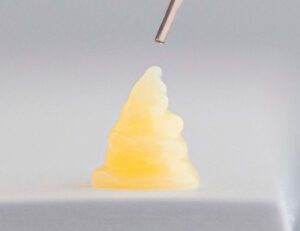
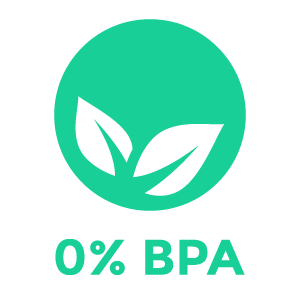

Kurzvorstellung ACTIVA PRESTO
am Zahnmodell
(EN mit deutschen Untertiteln)
Larry Clark, Head of Clinical affairs bei PULPDENT, stellt erstmalig ACTIVA PRESTO auf dem Ney York Dental Meeting vor.
Er präsentiert die Verarbeitung am Zahnmodell und erläutert dabei kurz warum PRESTO entwickelt wurde und seine besonderen Eigenschaften. (Länge: 6:29 Min.)
Taste c für Untertitel an/aus



Was ist ACTIVA™ PRESTO™?
ACTIVA™ PRESTO™ ist das erste lichthärtende Composite ohne Bis-GMA, BPA und BPA-Derivate das entwickelt wurde, um die Eigenschaften natürlicher Zähne nachzuahmen.
Es baut auf einem Harz auf Urethanbasis auf das für alle restaurativen Verfahren geeignet ist. Die Anwendungsbereiche des Füllungsmaterial sind Gruben, Wurzeloberflächenkavitäten und Restaurationen der Klassen I, II, III, IV und V, bei denen keine Beteiligung der Pulpa vorliegt.
A4- und A6-Farben sind vor allem für zervikale Restaurationen nützlich bei älteren Patienten.
Wodurch unterscheidet sich ACTIVA™ PRESTO™ von anderen Kompositen?
Ionische Harzmatrix: Die Magie liegt in einem hydrophilen Harz, das Wasser transportiert und dennoch stark, haltbar und unlöslich ist.*
Das Harz reagiert auf pH-Änderungen im Mund, gibt bei niedrigem pH-Wert mehr Ioneninhalt ab und lädt sich wieder auf, wenn der pH-Wert neutralisiert wird. Dadurch wird PRESTO zu einem ästhetischen, lichthärtenden Material, das Kalzium, Phosphat und Fluorid in einer haltbaren, verschleißfesten Harzmatrix enthält. durch die mittlerweile mit zwei Patenten honorierte und einzigartige CRYSTA-Technologie wird dies innerhalb eines reinen Komposites erst möglich.
In der Matrix ist auch eine patentierte, stoßabsorbierende, gummierte Harzkomponente (EMBRACE™). Dies erhöht die Biegefestigkeit bei gleichzeitiger Beibehaltung der Ästhetik, Härte, Druckfestigkeit und Langlebigkeit. Sie nimmt Stöße auf und widersteht Abplatzungen und Frakturen, selbst in dünnen Bereichen an schrägen Rändern.
Hervorragende Verarbeitungseigenschaften: Das Material ist stapelbar, sackt nicht zusammen und behält seine Form vor der Lichthärtung bei. Es integriert sich mit der Zahnstruktur für eine randlose Anpassung an die Zähne. Außerdem ist es hochgradig röntgenopak (250%) und schnell zu platzieren mittels einfach zu verwendenden 1,2-ml-Spritzen.
PRESTO ist nicht für die direkte Platzierung auf der freiliegenden Pulpa geeignet.
ACTIVA PRESTO ist ein Composite ohne Bis-GMA, BPA und BPA-Derivate
Diese Materialien sind bei Kunststoff-Verbundwerkstoffen schon seit Jahren Inhalt kontroverser Diskussionen mit Begriffen wie Schädlichkeit, Verträglichkeit, Biotoxizität, Neurotoxizität etc… Wir freuen uns mit ACTIVA Presto ein Material vorstellen zu dürfen, was die gewohnten Vorteile von Komositen auch ohnen diese Inhaltsstoffe bietet.
*Comparison of Mechanical Properties of Dental Restorative Material. Girn V, et al. J Dent Res 93 (Spec Iss A) 1163, 2014 (www.iadr.org).
*Water absorption and solubility of four dental cements. Hall J, et al. J Dent Res 95 (Spec Iss A) S1126, 2016 (www.iadr.org).

ACTIVA PRESTO Look & Feel
Das Video zeigt ein Hands-On Demo am Zahnmodell die und demonstriert Konsistenz und Verarbeitungseigenschaften des Komposits.
(Taste c für Untertitel an/aus.)
Der Zahn als Standard
Material | Ästhetik | Hydrophil | Hohe Stärke | Freisetzung/Aufladen von Calcium & Phosphat | Schockabsorbtion |
|---|---|---|---|---|---|
Zahnstruktur | |||||
ACTIVA PRESTO | |||||
Herkömmliches Komposit | NEIN | NEIN | NEIN |
ACTIVA PRESTO integriert die Magie der Natur in einem dentalen Komposit
Mundstoffwechsel - Beteiligung am Ionenaustausch
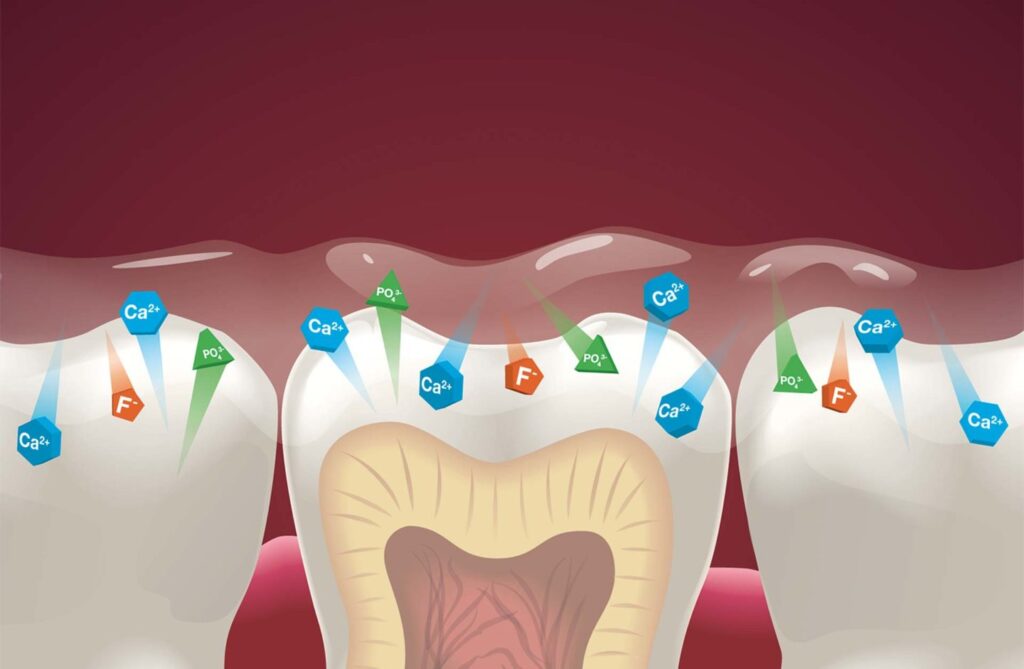
ACTIVA nimmt an einem dynamischen System des Ionenaustauschs mit dem Speichel und der Zahnstruktur teil, gibt kontinuierlich Kalzium-, Phosphat- und Fluoridionen ab und lädt sie wieder auf und reagiert so auf pH-Änderungen im Mund. *1,7,9,11
ACTIVA stärkt so die natürliche Zahngesundheit und bietet hohen Schutz gegen Sekundärkaries.
Hydrophiles „Embrace“ Harz:
ACTIVA -Produkte sind mit einem patentierten, feuchtigkeitsfreundlichen ionischen Harz (EMBRACE-Harz) formuliert, das eine kleine Menge Wasser enthält. Es ist bioaktiv, ahmt die Natur nach und reagiert auf Veränderungen in der oralen Umgebung. *9
EMBRACE ist wasserfreundlich. Wie man auf Abbildung 1 und 2 sehen kann mischt es sich sogar mit Wasser. Tatsächlich aktiviert Feuchtigkeit die Chemie des Embrace-Kunststoffs, sodass er sich besser mit der Zahnstruktur verbinden kann.
Eine kontrollierte und relativ geringe Wasseraufnahme ist vorteilhaft für bioaktive Materialien, die Wasser benötigen, um ihre bioaktiven Eigenschaften und ihr Potenzial für den Ionenaustausch freizusetzen. Eine übermäßige Wasseraufnahme kann jedoch die physikalischen Eigenschaften von Restaurations- und Basis-/Linermaterialien mit der Zeit beeinträchtigen. Daher ist die Wasseraufnahme bei ACTIVA Produkten optimal ausbalanciert.
Bonding
Herkömmliche Versiegelungen haben nur eine mechanische Verbindung zum Zahn. Sie verbinden sich nicht chemisch. Sie sitzen auf dem Zahn, aber sie integrieren sich nicht mit ihm. ACTIVA Dentalmaterialien verbinden sich hingegen auch chemisch mit dem Zahn.
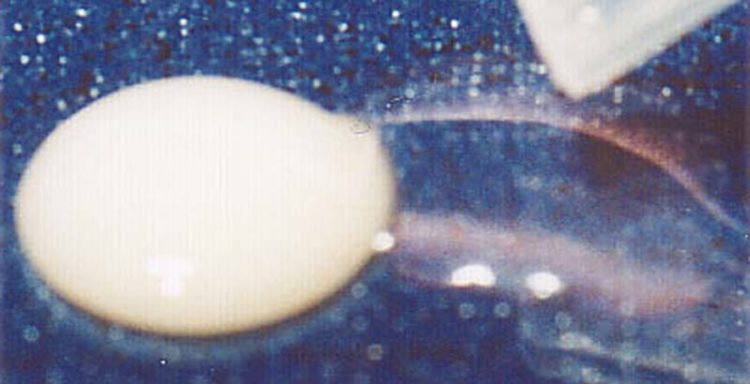
Abb. 1 Ein Wassertropfen wird neben den unausgehärteten Embrace-Kunststoff gelegt
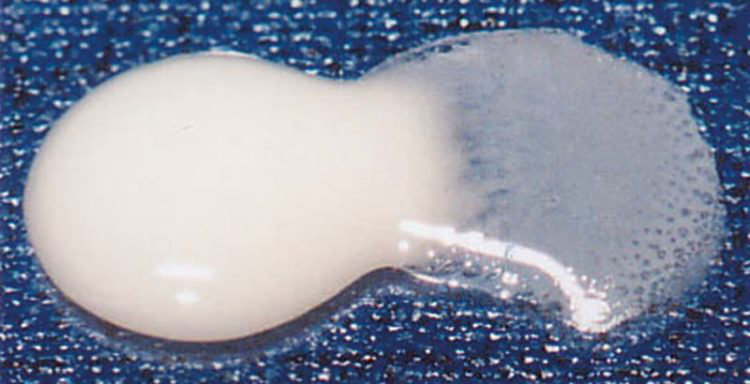
Abb. 2 Embrace vermischt sich mit dem Wasser
Vergleich von ACTIVA BIOACTIVE und ACTIVA PRESTO - Indikationen und physikalische Eigenschaften
Indikation / Eigenschaften | ACTIVA BioACTIVE | ACTIVA PRESTO |
|---|---|---|
beinhaltet harzmodifiziertes Glasionomer | JA | NEIN |
Mineral angereichertes aktives Material | ||
Kalzium-, Phosphat-, Fluoridfreisetzung/-rückführung | JA | JA |
Einsatz bei hohem Kariesrisiko | JA | JA |
Hydrophil | JA | JA |
Enthält bruchfestes gummiertes Harz | JA | JA |
Frei von Bis-GMA, BPA, BPA Derivaten | frei | frei |
Spendersystem | Doppel-Mischspender | 1,2ml Standard Mono-Druckspritze |
Core Build Up | JA | NEIN |
Bulk-Fill oder Lagen | Bulk-Fill geeignet | Lagentechnik |
Viskosität | Injizierbar / fließfähig | Stapelbar / Formbar / Low Flow |
Farben | A1,A2,A3,A3.5, Kids | A1,A2,A3,A3.5, A4,A6,B1,BW |
Polierfähigkeit | gut | sehr gut |
Chairside Anwendungszeit bei großen Restaurationen | sehr schnell im Bulk-Fill Verfahren | Lagentechnik |
Chairside Anwendungszeit bei kleinen Restaurationen | sehr schnell | sehr schnell |
Aushärtung | Dualhärtung | Lichthärtung |
Druckstärke | 280 MPa | 327 ± 15 MPa |
diametrale Zugfestigkeit | 42 MPa | 53 ± 2 MPa |
Abrasionswiderstand | hoch | hoch |
Durchbiegung bei Bruch (Zähigkeit) | 1,1mm (sehr hoch) | 0,7mm (hoch) |
Röntgenopazität | 150% | 250% |
Physikalische Eigenschaften von ACTIVA PRESTO
Eigenschaften | Wert |
|---|---|
Photopolymerisationszeit | 20 ± 2 sec |
Tiefe der Lichtaushärtung | 2,5 mm |
Schrumpfungsrate bei der Polymerisation | 2,1 % |
Fluoridfreisetzung binnen eines Tages | 230 ppm |
Fluoridfreisetzung binnen 7 Tagen | 940 ppm |
Röntgenopazität | 2,5 AI (250%) |
diametrale Zugfestigkeit | 53 MPa ± 15 MPa |
Druckfestigkeit | 327 MPa ± 15 MPa |
Durchbiegung bei Bruch ( Zähigkeit) | 0,7 mm |
Biegemodul | 8 GPa |
Wasseraufnahme nach 7 Tagen | 0,26 % |
Füller-Anteil (nach Gewicht) | 70 % |
Literaturverweise
- Fluoride ion release and recharge over time in three restoratives. Slowikowski L, et al. J Dent Res 93 (Spec Iss A): 268, 2014 (www.iadr.org).
- Zmener O, Pameijer CH, Hernandez S. Resistance against bacterial leakage of four luting agents used for cementation of complete cast crowns. Am J Dent 2014;27(1):51-55.
- Zmener O, Pameijer CHH, et al. Marginal bacterial leakage in class I cavities filled with a new resin-modified glass ionomer restorative material. 2013.
- Flexural strength and fatigue of new Activa RMGIs. Garcia-Godoy F, et al. J Dent Res 93 (Spec Iss A): 254, 2014 (www.iadr.org).
- Deflection at break of restorative materials. Chao W, et al. J Dent Res 94 (Spec Iss A) 2375, 2015 (iadr.org).
- McCabe JF, et al. Smart Materials in Dentistry. Aust Dent J 201156 Suppl 1:3-10.
- Cannon M, et al. Pilot study to measure fluoride ion penetration of hydrophilic sealant. AADR Annual Meeting 2010.
- Water absorption properties of four resin-modified glass ionomer base/liner materials. (Pulpdent)
- pH dependence on the phosphate release of Activa ionic materials. (Pulpdent)
- Kane B, et al. Sealant adaptation and penetration into occlusal fissures. Am J Dent 2009;22(2):89-91.
- Rusin RP, et al. Ion release from a new protective coating. AADR Annual Meeting 2011.
- Sharma S, Kugel G, et al. Comparison of antimicrobial properties of sealants and amalgam. IADR Annual Meeting 2008.
- Naorungroj S, et al.Antibacterial surface properties of fluoride-containing resin-based sealants J Dent 2010.
- Prabhakar AR, et al. Comparative evaluation of the length of resin tags, viscosity and microleakage of pit and fissure sealants – an in vitro scanning electron microscope study. Contemp Clin Dent 2011;2(4):324-30.
- Pameijer CH. Microleakage of four experimental resin modified glass ionomer restorative materials. April 2011.
- Microleakage of dental bulk fill, conventional and self-adhesive composites. Cannavo M, et al. J Dent Res 93 (Spec Iss A): 847, 2014 (www.iadr.org).
- Comparison of Mechanical Properties of Dental Restorative Material. Girn V, et al. J Dent Res 93 (Spec Iss A): 1163, 2014 (www.iadr.org).
- Mechanical properties of four photo-polymerizable resin-modified base/liner materials. (Pulpdent)
- Singla R, et al. Comparative evaluation of traditional and self-priming hydrophilic resin. J Conserv Dent 2012;15(3):233-6.
- Water absorption and solubility of restorative materials. (Pulpdent)
- Increasing the Service Life of Dental Resin Composites. www.nidcr.nih.gov. grants & funding. concept clearances. May 2009.
- Spencer P, et al. Adhesive dentin interface the weak link in the composite restoration. Am Biomed Eng 2010;38(6):1989-2003.
- Murray PE,et al. Analysis of pulpal reactions to restorative procedures, materials, pulp capping, and future therapies. Crit Rev Oral Biol Med 2002;13:509.
- DeRouen TA, et al. Neurobehavioral effects of dental amalgam in children a randomized clinical trial. JAMA 2006;295(15):1784-1792.
- Nordbo H, et al. Saucer-shaped cavity preparations for posterior approximal resin composite restorations observations up to 10 years. Quintessence Int 1998;29(1):5-11.
- Skartveit L, et al. In vivo fluoride uptake in enamel and dentin from fluoride-containing materials. J Dent Child 1990; 57(2):97-100.
- Wear of a calcium, phosphate and fluoride releasing restorative material. Bansal R, et al. J Dent Res 94 (Spec Iss A): 3797, 2015 (iadr.org).
- Wear resistance of new ACTIVA compared to other restorative materials. Garcia- Godoy F, Morrow BR. J Dent Res 94 (Spec Iss A): 3522, 2015 (iadr.org)
- Pameijer CH, Garcia-Godoy F, Morrow BR, Jeffereis SR. Flexural strength and flexural fatigue properties of resin-modified glass ionomers. J Clin Dent 2015;26(1):23-27.
- Pameijer CH, Zmerner O, Kokubu G, Grana D. Biocompatibility of four experimental formulations in subcutaneous connective tissue of rats. 2011.
- Pameijer CH, Zmener O. Histopathological evaluation of an RMGI ionic-cement [Pulpdent Activa], auto and light cured – A subhuman primate study. 2011.
- ACTIVA BioActive-Restorative: 6-month clinical performance. The Dental Advisor 2015. www.dentaladvisor.com.
- ACTIVA BioActive-Restorative: One-year clinical performance +++++. The Dental Advisor 2015. www.dentaladvisor.com.
- Compressive strength and deflection at break of four cements. Daddona J, Pagni S, Kugel G. J Dent Res 95 (Spec Iss A) 0658, 2016 (iadr.org).
- Surface deposition analysis of bioactive restorative material and cement. Chao W, Perry R, Kugel G. J Dent Res 95 (Spec Iss A) S1313, 2016 (www.iadr.org).
- Comparison of compressive strength of liner materials. Epstein N, et al. J Dent Res 95 (Spec Iss A) S0653, 2016 (www.iadr.org).
- Water absorption and solubility of four dental cements. Hall J, et al. J Dent Res 95 (Spec Iss A) S1126, 2016 (www.iadr.org).
- Shear bond strength of several dental cements. Tran A, et al. J Dent Res 95 (Spec Iss A) S0579, 2016 (www.iadr.org),
- Repetitive deflection strengths of adhesive cements. Samaha S, et al. J Dent Res 95 (Spec Iss A) S1076, 2016 (www.iadr.org).
- Fluoride release of bioactive restoratives with bonding agents. Murali S, et al. J Dent Res 95 (Spec Iss A) S0368, 2016 (www.iadr.org).
- Profilometry bioactive dental materials analysis and evaluation of dentin integration. Garcia-Godoy F, Morrow BR. J Dent Res 95 (Spec Iss A) 1828, 2016 (iadr.org).
- Staining and whitening products induce color changes of multiple composites. Parks H, Morrow BR, Garcia-Godoy F. J Dent Res 95 (Spec Iss A) S1323, 2016 (www.iadr.org).
- Profilometry based composite abrasion using different current dentifrices. Lindsay AA, Morrow BR, Garcia-Godoy F. J Dent Res 95 (Spec Iss A) S0318, 2016 (iadr.org).
- Bansal R, Burgess JO, Lawson NC. Wear of an enhanced resin-modified glass-ionomer restorative material. Am J Dent 2016;29(3):171-174.
- Evaluation of pH, fluoride and calcium release for dental materials. Morrow BR, Brown J, Stewart CW, Garcia-Godoy F. J Dent Res 96 (Spec Iss A) 1359, 2017 (iadr.org).
- Adhesion of s. mutans biofilms on potentially antimicrobial dental composites. Mah J, Merritt J, Ferracane J. J Dent Res 96 (Spec Iss A) 2560, 2017 (iadr.org).
- Microleakage under class ll restorations restored with bulk-fill materials. Kulkami P, et al. J Dent Res 96 (Spec Iss A) 2604, 2017 (iadr.org).
- Fluoride release of dental restoratives when brushed with fluoridated toothpaste. Epstein N, Roomian T, Perry R. J Dent Res 96 (Spec Iss A) 1254, 2017 (iadr.org).
- ACTIVA Bioactive-Restorative. Two-year clinical performance +++++. The Dental Advisor 2017, dentaladvisor.com.
- May E, Donly KJ. Fluoride release and re-release from a bioactive restorative material. Am J Dent 2017;30(6):305-308.
- Garoushi S, Vallittu PK, Lassila L. Characterization of fluoride releasing restorative dental materials. Dent Mater J 2018;37(2):293-300.
- Reznik J, Kulkarni P, Shah S, Chang B, Burgess JO, Robles A, Lawson NC. Crown Retention Strength and Ion Release of Bioactive Cements. J Dent Res 97 (Spec Iss A) 656, 2018 (iadr.org).
- Boutsiouki C, Lücker S, Domann E, Krämer N. Is a bioactive composite able to inhibit secondary caries. Justus-Liebig-Universitat Giessen, Vaterstetten. Germany 2017.
- Alrahlah A. Diametral tensile strength, flexural strength, and surface microhardness of bioactive bulk fill restorative. J Contemp Dent Practice 2018;19(1):13-19.
- Influence of novel bioactive materials on dentinal enzymatic activity. Comba A, Breschi L, et al. J Dent Res 97 (Spec Iss A) 0273, 2018 (iadr.org).
- Dentifrices, surface roughness and depth loss of restorative materials. Smith JB, Lambert AN, Morrow BR, Pameijer CH, Garcia-Godoy F. J Dent Res 97 (Spec Iss A) 1621, 2018 (iadr.org).
- Enamel demineralization adjacent to orthodontic brackets bonded with Active Bioactive Restorative. Saunders KG, Donley KJ, Mattevi G. of Texas Health Science Center, San Antonio 2017.
- Bioactive materials, demineralization, and shear strength of orthodontic brackets. Donohue J, et al. J Dent Res 96 (Spec Iss A) 3289, 2017 (iadr.org).
- Roulet J-F, et al. In vitro wear of two bioactive composites and a glass ionomer cement. DZZ International 2019;1(1):24-30.
- Banon R, et al. Clinical evaluation of a new bioactive ionic resin material (ACTIVA™ BIOACTIVE) in primary molars – a split mouth randomized trial. Ghent University 2018.
- Omidi BR, et al. Microleakage of an enhanced resin-modified glass ionomer restorative material in primary molars. Researchgate 2018;15(4)205-213.
- Croll TP, Lawson NC. Activa Bioactive-Restorative material in children and teens: examples and 46-month observations. Inside Dentistry 2018.
- Sauro S, et al. Effects of ions-releasing restorative materials on the dentine bonding longevity of modern universal adhesives after load-cycle and artificial saliva aging. Materials 2019;12:722.
- Lloyd VJ, Hunter F, Comisi J. The bio-mineralization potential of various bioactive restorative materials, MUSC 2019.
- Bhadrad, et al. A 1-year comparative evaluation of clinical performance of nanohybrid composite with Activa bioactive composite in Class II carious lesion: randomized control study. JCD 2019;22(1):92-96.
- Maciak M. Novel applications of a bioactive resin in perforations, root resorption and endodontic-periodontic lesions. Roots 2018;14(4):32-36.
- ElReash A, et al. Biocompatibility of new bioactive resin composite versus calcium silicate cements – an animal study. BMC Oral Health 2019;19:194-203.
- Alkhudhairy F, et al. Adhesive bond integrity of dentin conditioned by photobiomodulation and bonded to bioactive restorative material. Photodyagn Photodyn 2019;28:110-113.
- Lopez-Garcia S, et al. In vitro evaluation of the biological effects of ACTIVA Kids BioACTIVE Restorative, Ionolux, & Riva LC on human dental pulp stem cells. Materials 2019,12,3694;doi:10.3390/ma12223694.
- Jun SK. The biomineralization of a bioactive glass-incorporated light-curable pulp capping material using human dental pulp stem cells. Biomed Res Int 2017;doi.org_10.1155_2017_2495282.
- Abdulla HA, Majeed MA. Assessment of bioactive resin-modified glass ionomer restorative as a new CAD CAM material. Part 1_marginal fitness study. Indian J Foren Med Tox 2020;14(1)865-870.
- Abdulla HA, Majeed MA. Assessment of bioactive resin-modified glass ionomer restorative as a new CAD CAM material part ll_fracture strength study. J Res Med Sci 2019;7(5)_74-79.
- Sauro S. et al. Effects of ion-releasing restorative materials on dentine bonding longevity of modern universal adhesives after load-cycle and artificial saliva aging. Materials 2019;12(5)722.
- Karabulut B, et al. Reactions of subcutaneous connective tissue to MTA, Biodentine, and a newly developed base-liner. Wiley 2020;doi.org_10.1155_2020_6570159.
- Awad MM, et al. Influence of surface conditioning on the repair strength of bioactive restorative material. J Appl Biomater Func 2020;18.
- Bishnoi N, et al. Evaluating marginal seal of a bioactive restorative material Activa Bioactive and two bulk fill composites in class ll restorations-an in vitro study. Int J Appl Sci 2020;6(3)98-102.
- Rouler J-F, et al. In vitro wear of dual-cured bulkfill composites and flowable bulkfill composites. J Esthet Restor Dent. 2020;1–9.
- Pires PM, et al. Contemporary restorative ion-releasing materials_ current status, interfacial properties and operative approaches. Brit Dent J 2020;229(7)450-458.
…weitere Literatur finden Sie auf unserer vollständigen Literaturliste…